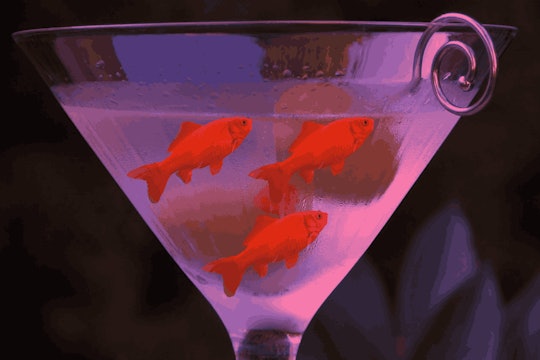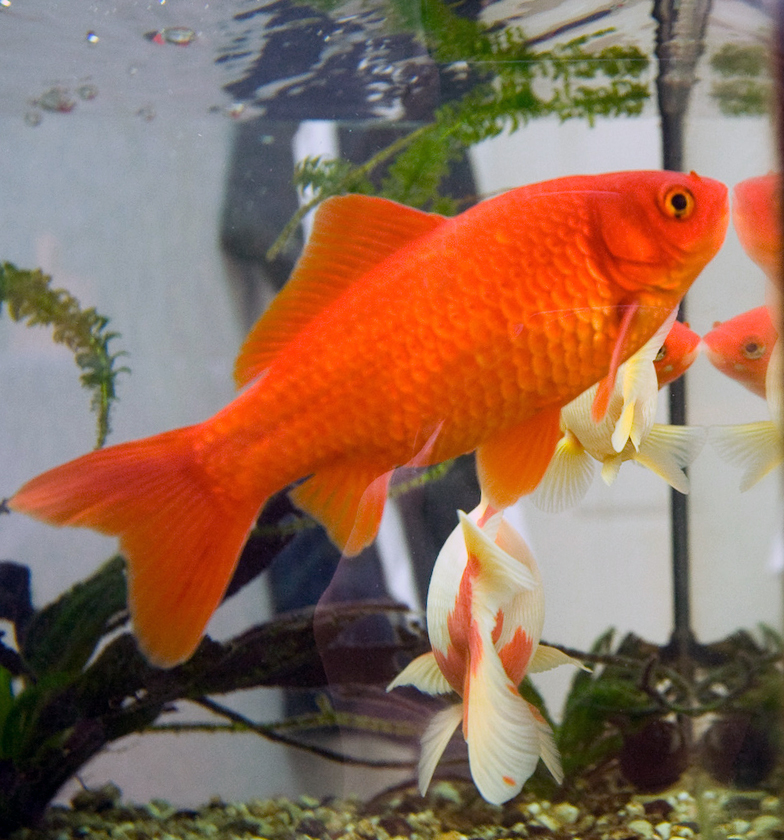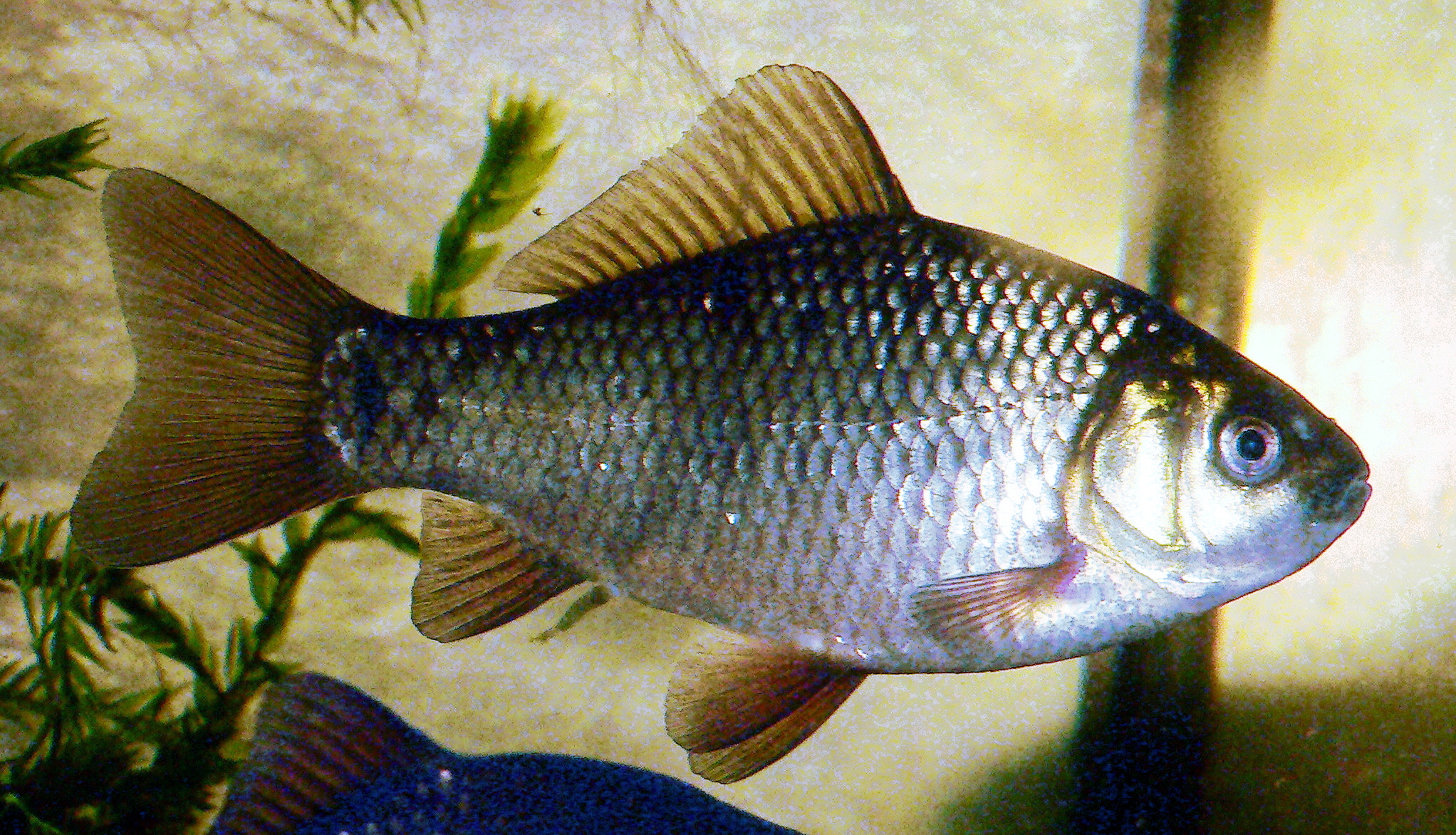
Goldfish can survive without oxygen for months by basically getting drunk
"It's bizarre to see this kind of enzyme in anything with a face"
Most goldfish live a relaxed existence, spending lazy days rummaging through neon pink gravel, bumping into gaudy ornaments, and getting fat on flakes and pellets. But our fishy friends have a secret superpower: they can survive in oxygen-depleted water for long amounts of time by producing alcohol.
It’s the result of genetic hiccup that occurred millions of years ago, and helps goldfish and their wild relative, the crucian carp, survive the frozen ponds of northern Europe and Siberia – ponds that freeze so completely in the winter that virtually all gas movement between the water and air ceases. They become anoxic: underwater wastelands devoid of life-sustaining oxygen.
While most vertebrates can survive only a few minutes under anoxia (naked mole rats, the mammalian champions, clock in at 18 minutes), crucian carp routinely spend the entire four to five-month winter swimming in iced-over ponds. But how do they survive the long, dark, and frigid winter of Northern Europe? Alcohol, of course! Carassius fish use their muscles to make ethanol in a stunning feat of biochemical adaptation to their extreme environment.

Can I get you a glass of water?
Without a steady supply of oxygen, mitochondria, the powerhouse of cells, can’t do their job of providing bundles of energy. Anoxic cells are instead forced to rely on oxygen-independent, or anaerobic, metabolism outside the mitochondria to convert energy into a usable form. This alternative pathway is highly inefficient and produces the toxic metabolic by-product lactic acid, the stuff that makes your muscles scream during a sprint. Carp under the ice face quite a predicament: they need energy to power their body, but somehow also need to avoid poisoning their own blood with lactic acid.
That’s where the booze comes in. By converting lactic acid into ethanol and then dumping that ethanol into the water, carp can survive for months with very little oxygen. And do they ever survive. Anoxic crucian carp party it up with blood alcohol contents reaching more than 50 mg per 100 milliliters over the winter. That’s above the legal limit for driving in Scotland and northern European countries, but not the USA or Canada (80 mg per 100 milliliters). They’re basically drunk for three months of the year.
Alcohol is not a normal metabolic by-product for a vertebrate. If it was, we wouldn’t need breweries, distilleries, and backwoods cooper stills to facilitate happy hour. Exactly how Carassius manage this strange feat of biochemistry has mystified scientists ever since the original paper describing their signature trick was published in 1980. Historically, biochemists assumed that the protein responsible for feeding the mitochondria, pyruvate dehydrogenase, malfunctioned under anoxia. This left the fuel, acetaldehyde, vulnerable to another protein, alcohol dehydrogenase, which converted it into ethanol instead.
Dissatisfied with the fuzzy details of this biological bootlegging operation, Catherine Fagernes, her supervisors Stian Ellefsen and Goran Nilsson, and their colleagues from the University of Oslo and the University of Liverpool, set out to unravel the secret. How do these unassuming aquarium dwellers become bartenders when the nights get long and cold?

A crucian carp, relative of the goldfish and member of the genus Crassius
To answer this question, the scientists put crucian carp up a “goldfish hotel” for several days, where the animals were exposed to well-oxygenated water, anoxic water, or anoxia followed by reoxygenation. They examined their skeletal muscle and liver, two tissues historically associated with ethanol production, as well as their heart and brain, critical tissues that do not produce ethanol. This allowed them to distinguish modifications to protein function were related to ethanol production from random quirks of the tissue. Along the same lines, the team examined tissues from not only ethanol-producing crucian carp and goldfish, but also the anoxia-intolerant common carp, which does not produce ethanol.
They found that goldfish and crucian carp don't make ethanol because of a system malfunction. Rather, the acetaldehyde is stolen away from the mitochondria by a modified protein unique to carp and goldfish, called pyruvate dehydrogenase, and made into booze. This prevents fuels from undergoing the reaction to make lactic acid.
Interestingly, this only happens in the ethanol-producing muscles of anoxia-tolerant species, and not in the liver, brain, or heart. Such targeted expression probably avoids the potential disaster of siphoning off perfectly good fuels from the mitochondria (and sending them off to be converted into ethanol instead) during well-oxygenated conditions.
The other side of the equation, the alcohol dehydrogenase protein that converts the "stolen" acetaldehyde into ethanol, is also selectively expressed in tissues that encounter large gluts of alcohol. This enzyme has a change in its amino acid sequence that makes it operate more effectively in reverse – alcohol is produced, not broken down, as it is in mammals.
We’ve seen this kind of pathway before in brewer’s yeast and in some plant roots. But it's bizarre to see this kind of enzyme in anything with a face, especially one as familiar as a pet goldfish.
So where do were go from here? We’ve largely worked out the nuts and bolts of this amazing feat of biochemical adaptation, and we can probably learn a lot from it. Cyprinids like goldfish and zebrafish have a long and colorful history as models for ethanol toxicity studies. Zebrafish in particular are an emerging model for studies of alcohol tolerance and sensitization as well as the impacts of fetal alcohol syndrome. With their natural exposure to elevated alcohol levels for long periods, perhaps these animals hold promise to further understanding the how our own bodies protects us against alcohol's toxic effects.
